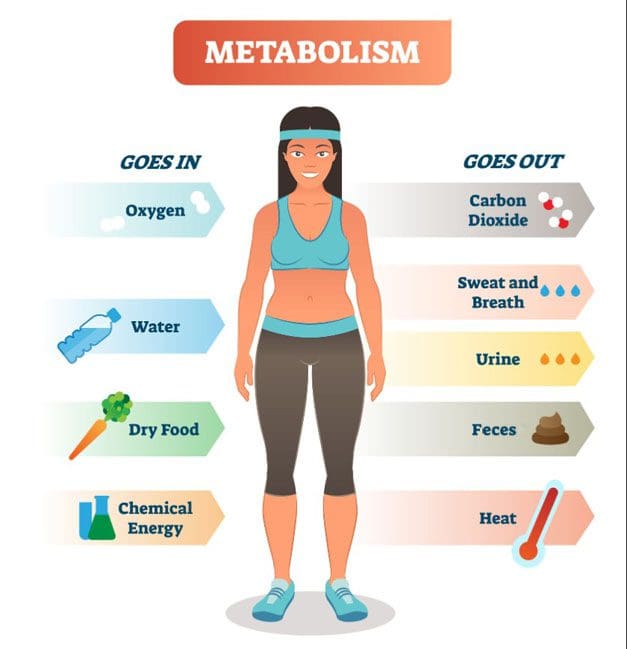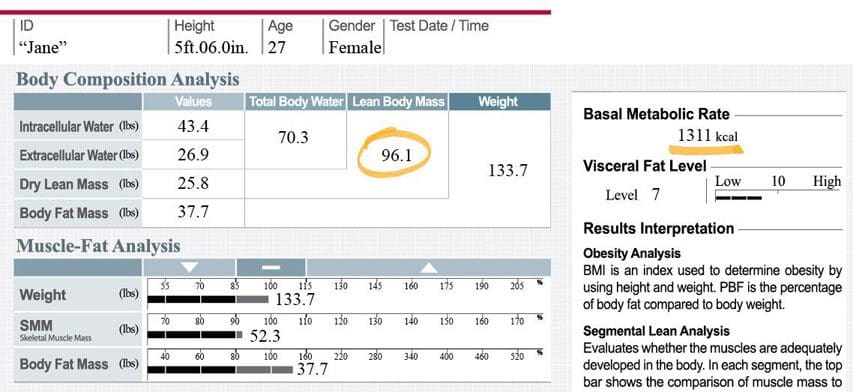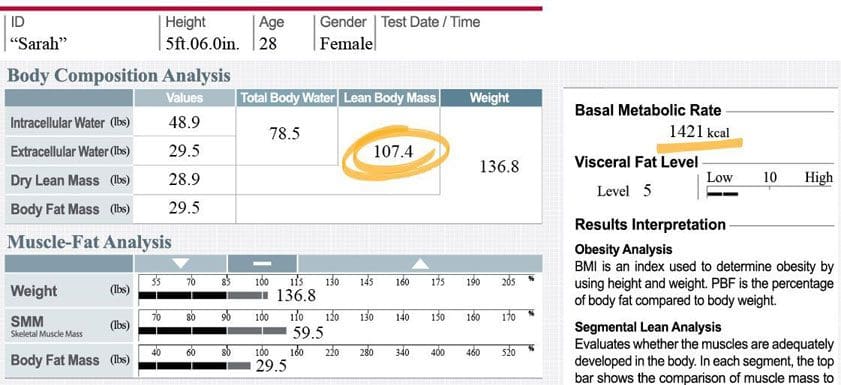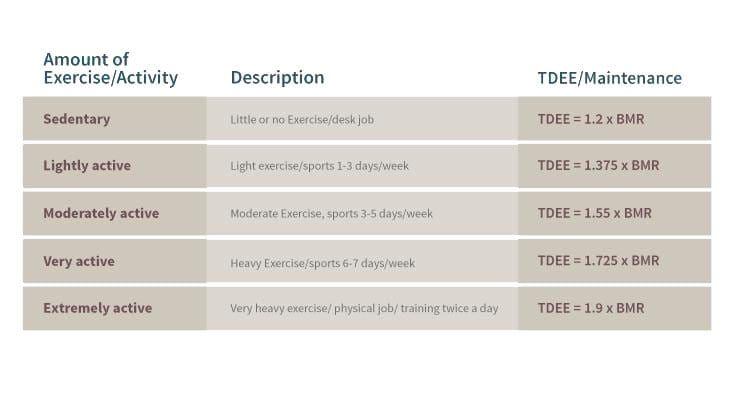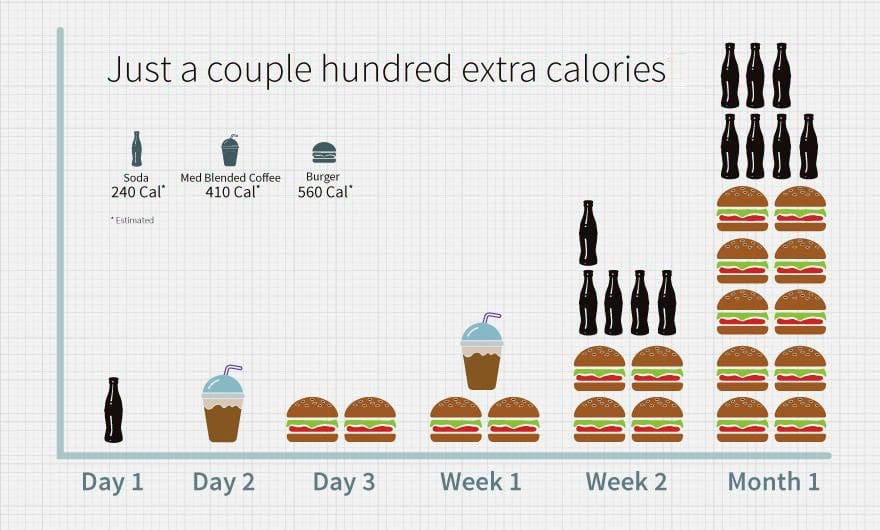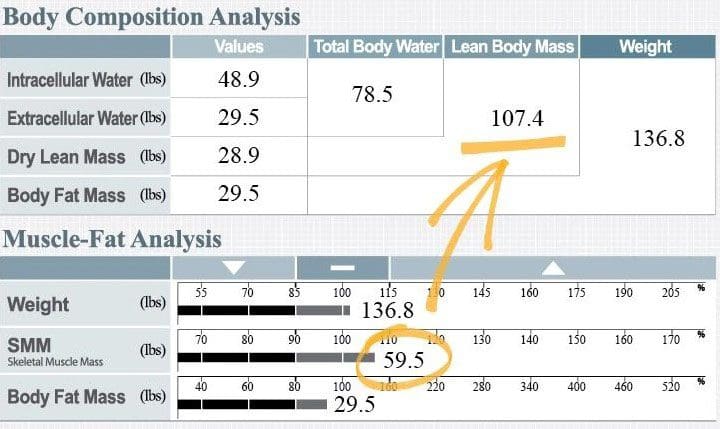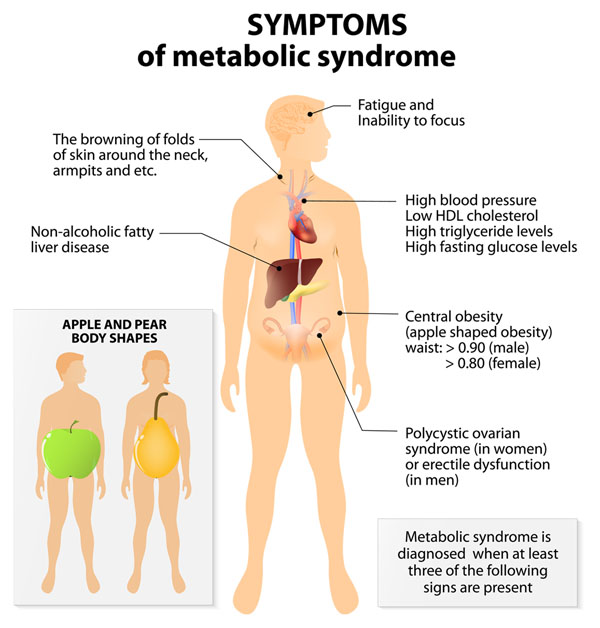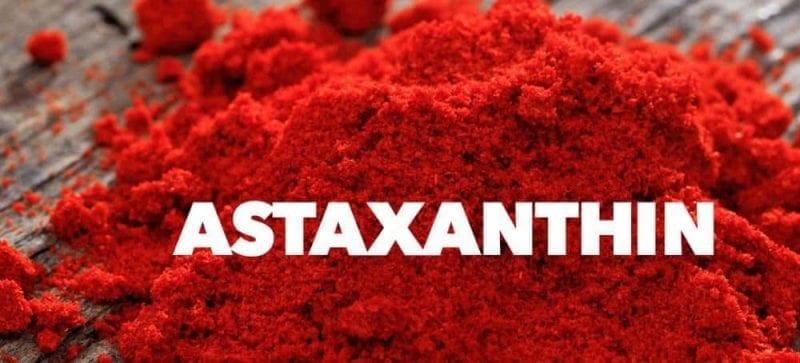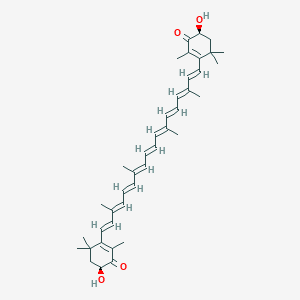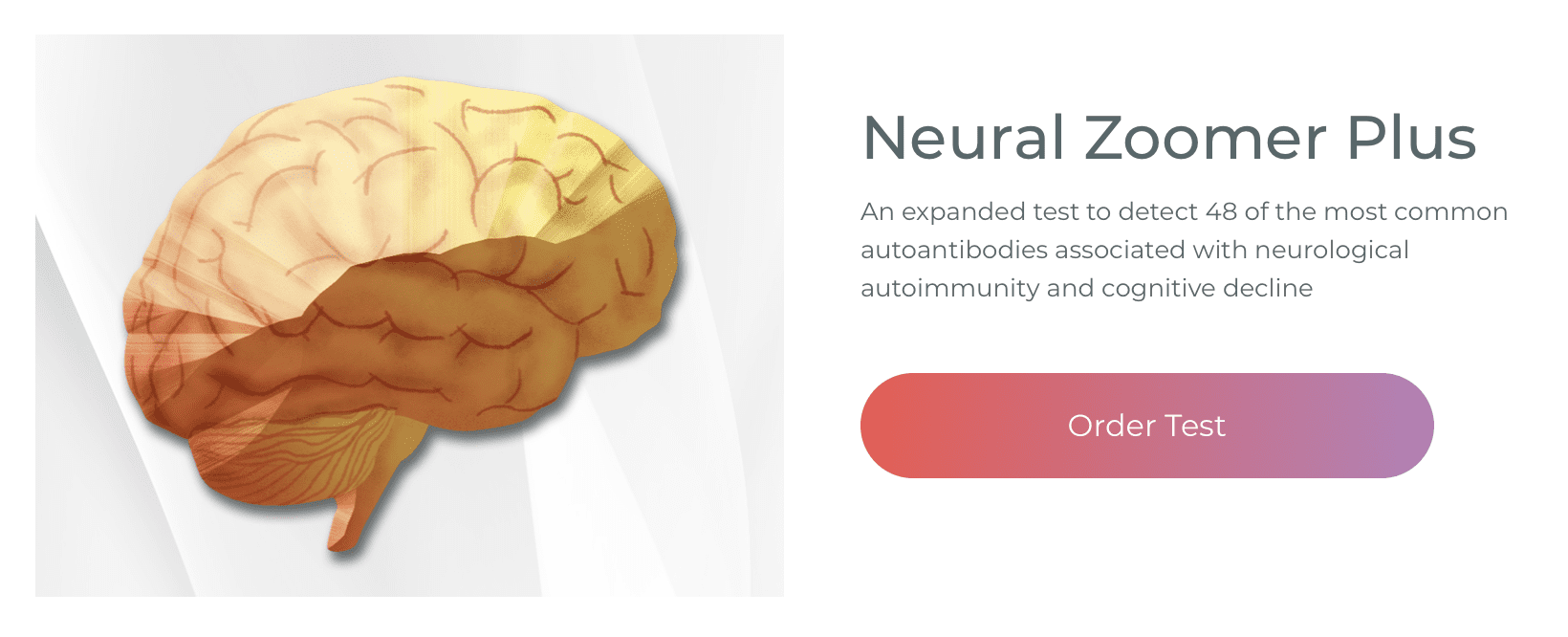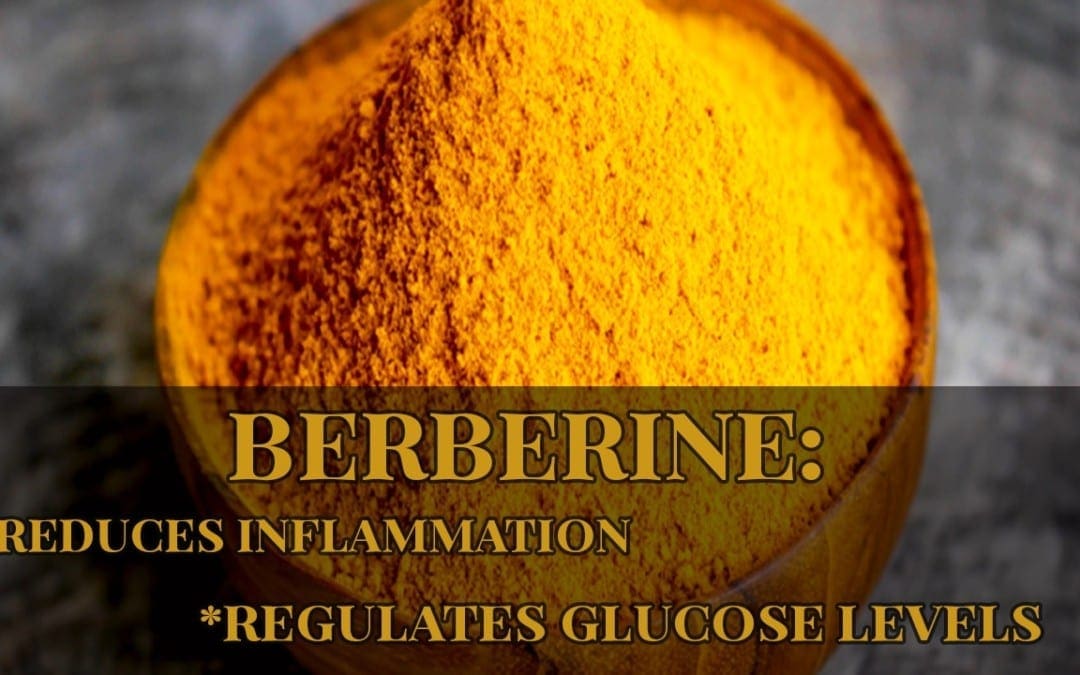
Metabolic Syndrome Affecting The Body | El Paso, TX (2021)
In today’s podcast, Dr. Alex Jimenez, health coach Kenna Vaughn, Astrid Ornelas, Truide Torres, and biochemist Alexander Isaiah Jimenez discuss what is metabolic syndrome and the steps to fix it.
Dr. Alex Jimenez DC*: All right, guys, we’ve come to another podcast, and welcome to Dr. Jimenez and Crew podcast. Welcome, and you have a family here. We’re going to go over metabolic syndrome today. Metabolic syndrome is a disorder that ultimately affects a whole lot of people. And what happens is, is it affects one of the largest populations in affecting El Paso, pretty much in this region. And what we have is it’s not a disease, OK? First of all, it’s a combination of presentations that medical doctors and the World Health Organization have determined high-risk factors to have a stroke, kidney disorders, and even problems with dementia. But overall, it’s pretty much if you have metabolic syndrome, you feel crummy. So today, what are we going to do is we’re going to discuss the issues, and we’d like to at least present it to you so that it becomes useful for you and the information provided by us is going to be helpful for you or a family member. So if you have the opportunity and something that you enjoy, please go ahead and at the bottom area. There’s a little bell to subscribe to. And a little belt in markets so that you could be the very first person to get information in the future when we ever posted. And also allows you to present or ask us for things that are important to you in the health-related realm. Now, what are we going to do today? My name is Dr. Alex Jimenez. I have my entire staff here. We’re going to go, and we’re going to present each one of them in different moments. And we’re going to do some fascinating dynamics. We will also have our resident biochemist at the National University of Health Science, who’s going to chime in and give us a little bit of foundational biochemistry. This information is going to be helpful. We’re going to try to make it as simple but as useful as possible. Now, bear in mind everything that we’re going to be talking about in and today revolves around the metabolic syndrome. Metabolic syndrome is what the health care organizations have determined, and the cardiac departments have five major symptoms. Now you have to have three of them, at least to be classified as metabolic syndrome. OK, now the first thing is to ask… What do you feel? Pretty much you feel like crap, OK? And it’s not a good feeling to feel this way, but you’ll see that if you have of these presentations, you’re going to notice that your doctor may give you a diagnosis of metabolic syndrome. Now, the first thing that happens is you usually have a bit about belly fat. Now, the belly fat that people have, people measure it. For men, it’s a belly kind of like the lonja, the belly that hangs over, and it’s about a good, I’d say, about 40 inches or greater in the male. In women is 35 inches or more. Now that’s one of the first presentations. Now the other presentation is high blood pressure. Now that high blood pressure that they use is 135 milligrams over deciliter. Sorry, yeah. Miller Mercury’s millimeters of mercury over these leaders to determine exactly on the diastolic and the systolic. So the diastolic is going to the systolic is going to be 135, the diastolic is going to be over 85. Now that doesn’t happen again; you’re going to notice something. These aren’t extreme ranges from OK. Metabolic syndrome has high triglycerides. Now the high triglycerides are going to be noted in the blood. OK, now one of the things that can be determined early on is high blood pressure, which is also so associated with metabolic syndrome. So the other final one is the elevation of or decrease actually of HDL. HDL or the good fragments of cholesterol. Alexander will be a resident biochemist and talk to us more about that in the latter part of the show. Now, bear in mind, I’ve given five things a. the fat, b. the high blood pressure, c. the blood glucose levels, and also the triglycerides, along with the lowering of the HDLs. The question is, how are we going to be able to control this now? I’m going to give you some real good basic ways that you can control metabolic syndrome. And by the time we’re done today, we’re going to be able to assess the situation. And even if you have it, you basically will be able to control it. There are rare diseases that you can be disordered. And again, this is not a disease; it’s a combination of syndromes or symptoms to be called a syndrome collectively. So metabolic syndrome can be construed. Now you’ll notice that the blood glucose level will be elevated, usually over 100; these are relatively average numbers people have. But if they’re higher than that, they do create issues now. Also, when you have the belly fat 40, and it’s not that much, many people have it. People also have blood glucose levels that are higher than 5.6 on their blood glucose A1C. These numbers and the 150 mg per deciliter of triglycerides are all normal but in combination. Together, they do ultimately create a scenario that is not favorable to cardiac issues. Cardiovascular issues do present as a result. So what we’re going to try to do is try to bring down and control these issues. Now, what are the things that cause metabolic syndrome? One of the things is stress, smoking, a sedentary lifestyle, and even sleep problems and disturbances. We can be elaborating on each of these we can we’re going to be elaborating on in the future podcasts. Still, we’re going to be able to tell exactly what’s going on in a better way. We also have issues with inflammation and processed foods. At the core metabolic syndrome, the main issue is insulin sensitivity issues and high blood pressure issues, and inflammation. So what are we going to do to control that? I want you to know that every single one of these five issues, whether it’s blood glucose, high triglycerides, low HDL counts, or blood glucose, they’re all relatable to one disorder. It’s insulin sensitivity. Insulin sensitivity controls every one of these factors from raising high blood pressure. The kidneys are controlled by insulin, causing an increase in blood pressure, and we’ll discuss that issue and its correlation. So if we can control the blood glucose, we ultimately have the fastest and the surest way to provide the fastest route to heal and fix an individual with metabolic syndrome. So let’s go ahead about the issues that are going to result from that. Now, as I’ve got this, we’re going to notice that if over some time you continue to have a lifestyle that has high levels of these particular five factors, you’re going to notice that you’re going to tend to have high cardiac risks. Now we have a team here, and I want to introduce each one. We have Kenna Vaughn, who is our health coach. Our health coach is the one that’s going to be the one that explains to our patients what is going on. I’ll bring her in. We also have the clinical liaison, which is Trudy. Trudy is the individual who will be able to bring out the questions and determine what kind of issues are appropriate for you. So we’ll be discussing those. And we have our resident chief editor, Astrid Ornelas, who will be the one that explains the studies on it. From Illinois, we also have Alexander, which we have right in the back where you can’t see him, but he’s presenting and say, Hello, Alex, can you get them there? Hello. All right. So he’s out there, and he’s going to discuss the issues and the biochemistry side of things, and we’re looking forward to explaining those issues. Now, one of the things we have to do is go back to the issue of insulin sensitivity. Insulin sensitivity is at the root of all these issues. So what we’re going to do is discuss exactly how insulin can be controlled. But what we’ve learned through these studies, and I’m going to bring in Mrs. Ornelas, is here to discuss the studies on how to control blood glucose and blood sensitivity. Astrid, what did you find out recently that shows the proof and presents the easiest way to control blood insulin and elevate HDL?
Astrid Ornelas: OK, well, first of all, just as you know, as you mentioned, metabolic syndrome, it’s a collection of health issues that can increase the risk of developing heart disease, stroke, and diabetes. It’s basically like, you know, it can affect our overall health and wellness. And I’ve done quite some research, and I’ve found them through the National Center of Biotechnology Information, the NCBI. A variety of research states that metabolic syndrome or people with metabolic syndrome, one of the easiest, you know, quote-unquote easiest or one of the best ways out there that can be used to help… Restore? Yeah, to help restore or reverse all metabolic syndrome would be through the ketogenic diet. So the ketogenic diet or the keto diet is a low carbohydrate, high-fat diet, which, according to research studies, offers many benefits towards people with metabolic syndrome. It can help improve or promote weight loss, and it can help reduce diabetes.
Dr. Alex Jimenez DC*: You know, I want to mention right there, I have found nothing faster to lower the blood glucose and reverse triglycerides issues and HDL issues than the ketogenic diet. So, in essence, if you want to do it fast, it’s incredible the speed at which it restores the body to what it is. What else is there?
Astrid Ornelas: Yeah. So, like the human body, usually, we use glucose or sugar. It is supposed to be our primary source of fuel, our main source of energy. But of course, for people who have metabolic syndrome, people who have obesity, insulin resistance, diabetes, or the increased risk of diabetes. The ketogenic diet can be very beneficial because it is a low carbohydrate diet, carbohydrates essentially turn into sugar or glucose, and we don’t want that. Like if people have metabolic syndrome, they have, you know, diabetes and insulin resistance. You don’t want sugar in your body because they produce too much of it. They have too much blood sugar. And but by increasing your height, by increasing the number of fats that you eat, and decreasing the number of carbohydrates, you keep a low amount. You keep insulin low, and you, by eating more fats, basically what you would do is make the body go into a state of ketosis.
Dr. Alex Jimenez DC*: You know what? Let me ask you something. I’m going to feed this over right now to Kenna, and I’m going to ask Kenna in your experiences with the blood sugar issues. How is it that we contain and we learn to be able to manage someone’s blood sugar? The quick is the fastest. What is it that you do in terms of coaching individuals, helping them back?
Kenna Vaughn: For coaching individuals. I always evaluate their diet, and the main thing I like to focus on is education because so many people are not educated about, as Astrid was saying, carbs and how they fuel your body. A Big Mac might have 54 carbs, and a sweet potato might have 30 carbs, and people don’t realize that they’re that different, and they only see 20 points or something like that. But the way that the carbohydrate breaks down in the body is enormous. And that’s why the ketogenic diet works so well because you’re using those good whole carbs that are going actually to contain protein as well. And so it’s going to help to break it down slower versus a Big Mac, which is just going to spike your insulin way up.
Dr. Alex Jimenez DC*: And what part of the Big Mac is the thing that spikes the sugar? I mean, in terms of that?
Kenna Vaughn: Right. So the bread, the carbs in the bread, actually breaks down differently in your body than a sweet potato would. And so that’s what’s going to give you that high glucose level. And then after that, you’re going to have the fall of the glucose level, which is your blood sugar going up and down does not feel great. So it’s something you want to avoid.
Dr. Alex Jimenez DC*: I have a question for you. For the sugars. When you asked the types of sugars you have, you just mentioned that the variety of carbohydrates matters. Yes. Tell me a bit of that.
Kenna Vaughn: The quality, like I was saying, sweet potatoes, avocados, things like that. They’re going to have the carbohydrates that are better for you, meaning you break them down differently than you would. Faster sugars like sucrose and things like that.
Dr. Alex Jimenez DC*: So simple sugars are out, basically, which is why, first of all, metabolic syndrome did not even exist before the advent of refined foods. So refined sugars have caused this problem. So what we want to do is sugar leads to inflammation. Sugar leads to triglyceride issues. Sugar or insulin sensitivity issues are the things that are the basis of this process. All roads lead to insulin sensitivity in this process. And the organ that provides us with insulin, the most significant amount is is the pancreas. The pancreas is nonstop. And depending on how the pancreas responds to this blood sugar drama, it determines the fate of the individual. It will alter the triglycerides. It will transform the blood pressure by directly holding sodium in the kidneys, the kidneys the body prepares. It retains the sodium, and by the nature of sodium, the blood pressure soars. So the fastest way to lower your blood pressure is a ketogenic diet. And this is amazing because it is simple. It’s not that complex. We can go extreme. And I know that Astrid had an excellent research document on that. Tell me a bit of what you noticed.
Astrid Ornelas: Yeah, basically, like, what Kenna was saying. Before, many people didn’t know the difference between what type of carbohydrates they want to eat, like, for example, as you said, you know, a lot of people will eat a Big Mac, and they’ll eat that sweet potato, and they don’t know the difference between a good carbohydrate; basically, we want to eat what you call complex carbohydrates, which is it’s more like we want to eat like whole wheat or we want to eat like like good starches because those there break in the body breaks them down into glucose, into sugar. But they’re used much more slowly to where it won’t. The body won’t directly use them. And then you’ll get that crash, that sugar crash.
Dr. Alex Jimenez DC*: Because of the insulin spike, right? It controls the insulin spike. You know what? I want to bring in our resident biochemist here. OK, so our brilliant biochemist is Alexander. He’s got a presentation here, actually, if I can see it there and see if I pop up here. And there he is. Alex, can you tell us a bit about what you’re trying to explain here on the biochemistry side of things?
Alexander Isaiah: As you guys mentioned, just in general, glucose is the primary energy source in the way that we use it for the breakdown. Its breakdown on energy consumption is called glycolysis. So without getting too much into it, our end goal here is pyruvate, which then goes into the citric acid cycle to be turned into acetylcholine. In normal conditions, this is good to have a carbohydrate meal, but when in excess, do you produce too much acetylcholine? When is too much acetylcholine used? You end up inducing fatty acid synthesis, which is induced by significant levels of insulin. So by doing so, you have acetylcholine, which ends up turning into palmitate. And one thing that Kenna mentioned is that not all foods are of equal quality. So here, we can see all the different types of fatty acids. So without going too much into biochemistry, but just giving you an idea of what’s going on here? These numbers on the left side represent the number of carbons in a row, and then the numbers to the right of the semicolon are the number of double bonds. And usually, double bonds don’t play a significant role until you get into digestion and the way the body uses these. So by having more double bonds, it’s more fluid. So you notice the difference between a piece of lard and olive oil. What’s the difference? The only difference is the number of carbons and the number of double bonds. So here we have oleic acid, olive oil, and then we have some saturated fat. We can see that the difference is prominent in the number of carbons and double bonds. Double bonds allow for a lower melting point. That’s why olive oil is a liquid at room temperature versus fatty acids, and this plays a significant role in how the body uses these types of things.
Dr. Alex Jimenez DC*: Alex, are you saying that? We all know that the excellent work of olive oil, avocado oil, and coconut oil is the best thing is, this is why this happens.
Alexander Isaiah: Exactly. So the more double bonds they have, the more fluid it will be within the body and allow the body to use those fats on time versus clogging up artery arteries and creating plaques within those arteries.
Dr. Alex Jimenez DC*: Excellent. You know what? One of the things that insulin does, it pack away carbohydrates in energy in the cell. If you do that, what happens with this blood sugar? Eventually, insulin spikes it and puts it in the cells. Finally, the cell grows, hence the belly fat. Ultimately, The belly starts green and gains the fat cells, and they start getting bigger, bigger, bigger because they get injected in there. That stuff starts seeping out, and once it can’t go in anymore, it ends up in the places like the pancreas. It ends up in the places like the liver. It ends up in the intramuscular into the muscular tissue. And that’s why we have the accumulation. And when you have a big belly, that’s what tips off the doctor, not only with the triglycerides in the blood glucose levels but also the belly fat. And that’s one of the things we have to kind of assess. So are these now these fatty acids? What are fatty acids used for, typically, Alexander?
Alexander Isaiah: Fatty acids are used almost for everything within the body, especially for energy consumption. It’s like saying, would you rather be able to go five miles or 10 miles? You always want to go 10 miles, right? So gram for gram fat as an energy source is much more fuel-efficient than glucose or carbs. So carbs provide our four grams of four calories per gram and fats are around nine. So it’s almost it’s more than double the amount of energy that you’re producing from these fatty acids. The tricky part is just knowing which ones are good. So going into the good fatty acids, which will be the ones with the double bonds. So I mean, any plant oils, animal fats, depending on which ones, we tend to want to stay away from large amounts of wretched ionic acid, as they tend to cause inflammation responses through the inflammation pathway. But the rest of these are good, especially EPA and DHEA. So DHEA is used within the nervous system. It’s turned into neurotic acid and EPA as well. So getting these marine oils is going to be suitable for your system just in general.
Dr. Alex Jimenez DC*: You know what, as I understand these processes and start realizing the biochemistry behind it, bringing it home to this process down to the cellular component it honors. It shows appreciation in terms of what creates the fatty acid excess. Now again, what happens due to too much of these fatty acids or carbohydrates in the bloodstream? The body tries to store it. It tries to store in the form of fat, and it’s shoved into the pancreas. So you get this fat inside the pancreas. If it can’t do it there, it eventually puts it in the liver. And like we mentioned, it gets it in the stomach, or that’s when we see it as a final thing. So then I like to take the explanation and break apart one other point, the high blood pressure component. Insulin has a direct effect on the kidneys. Insulin tells the kidneys, Look, we need to pack this stuff into the fat. And without getting beyond too much of the chemistry dynamics, you can see that what’s going to occur is that the kidneys will be commanded to hold more sodium. In chemistry, biochemistry, and clinical science, we learned that the more sodium you retain, the blood pressure rises. In essence, that’s how quick the blood pressure goes. So you do that for some time, and then you force the collection of atherosclerotic plaques because that fat is in there, and it can’t go anywhere. You’re going to have a problem in the long term, in the long term future. So speaking about the oils, as Alexander just did, one of the things we ask is, Well, what oils cannot we should know? We use canola oil, corn oil, sesame seed oil. I love sesame seeds. But the problem is that sesame seed oil causes inflammation, as Alex said, with arachidonic acids. So what we have to do is figure out precisely what types of oils we can do and avocados, as Kenna had mentioned, are a great source of fats that we can use and make things more processed. Our bodies and the old pyramid of diet are really bad because it’s heavy on carbohydrates. So one of the things that we look at is maintaining all those components. So we talked about triglycerides, the belly fat, how it’s put together. And each one of these, I want to point this out again. The high blood pressure, which is 135 high blood pressure, is not considered at 135. Usually, it’s at 140. OK. So if so, why are we using triglycerides at 150 are not regarded as excessive. You know, HDL is lower than 50 is not considered horrible, but in combination together, if you have one at all, these three of these components are the five. That’s what leads to a pre-position of of of being sick and feeling crummy, let alone any prolonged period of this will end up leading to metabolic disorders, heart problems, stroke problems, dementias that occur as a result of protracted metabolic syndrome states that are within the individual. I want to ask Alexander. He’s got some fascinating dynamics, as I want to present right now, and we’re going to show his screen right here because he’s got some exciting components on what also affects metabolic syndrome. Alexander.
Alexander Isaiah: So kind of going into what it is, I guess ketosis, because everyone wonders what goes on. So I kind of got this diagram here that I drew out for you guys. We’re ignoring the ephedrine pathway over here, but just in general. So what’s going to happen first is you’re going to deplete any glucose that you have. So the body typically stores around 100 grams of glucose in the liver and around 400 grams within the muscle components of the entire body. So if you times 500 times for, that’s about 2000 calories, which is your daily limit, so you’ve got almost a day’s worth of glucose always stored within your body. But once you deplete that, your body’s going to start looking for other things. In the meantime, it takes a few days for your body to switch over from burning sugar, which is glucose, to burning ketone bodies from fat. So what’s going to happen? Your, first of all, your adrenals are going to start releasing epinephrine, its precursors, norepinephrine. And this is because of a couple of different things. You’re going to get a bit jittery first, and you’re going to feel bad for the first couple of days, but then your body and starts switching over as your brain starts to begin using these ketone bodies as an energy source. So as you’re producing norepinephrine, these are just like, this is the cell surface here. These are just different precursor markers. So we have B1, B2, B3, and A2. Doing these will mark and signal to the gas protein, which will allow aminoglycosides to activate ATP into cyclic AMP. Now, cyclic AMP is an essential component of the degradation of fatty acids. The cool part is it’s inhibited by phosphodiesterase. So when people come in and say, why is caffeine a good fat burner? The main reason why is because caffeine inhibits phosphodiesterase to a certain extent. You don’t want to go too crazy with the caffeine and start doing lots of cups of coffee.
Dr. Alex Jimenez DC*: Should I have eight glasses of coffee, or how many cups?
Alexander Isaiah: I think one glass of coffee is more than enough. So by having cyclic amp be more active, you activate the thing called protein kinase A, which activates ATP, and then it starts a hormone-sensitive life base. Once hormone-sensitive lipase is activated, it begins to degrade. It begins to break down fatty acids. Once these fatty acids enter and are broken down, they then enter into the mitochondria, and the mitochondria will then produce heat from this. So that’s why people who are ketosis are always really warm. So what do I recommend when people are starting to do a ketosis diet? Water? Keto diet, definitely water and as well as, I would say, L-carnitine. So as we’re looking at L-carnitine here, we could see that during fatty acid degradation, you use L-carnitine as the primary transporter between the outer mitochondrial membrane and the inner mitochondrial membrane. So by using fatty acids, here’s fatty asceloca; after we’ve broken down these fatty acids, it’s going to enter CPT one, which is carnitine, a seal translocated want or poly transferase one. It’s going to enter and interact with carnitine, and then it’s going to turn into seal carnitine. Once seal carnitine turns into it, it can enter the inner mitochondrial membrane through these two enzymes translocation and CPT two to be broken down back into a seal code, which does the same byproduct as glucose eventually. Also, then, your mitochondria can use these in beta-oxidation. One thing to know is you have to drink a lot of water because people going through ketosis will be upregulating the urea cycle. So you need to make sure that you pull a lot of water or drink a lot of water throughout the day. Anyone doing a keto diet today has a minimum of a gallon of water throughout the day, not all at once, but throughout the day.
Dr. Alex Jimenez DC*: It’s incredible, Alex, that you put that together because that makes perfect sense to me and also explains why people do say when we put them on the ketogenic diet, that they do increase body temperature and the water helps you kind of keep the whole system pumping because that’s what we’re pretty much made of. And also, the pathways that you indicated the hydrogen in the water are necessary for the process to occur.
Alexander Isaiah: Yes. Certain aspects within each of these fuel each other; it’s all an interconnected pathway. But you will upregulate the urea cycle during ketosis much more than when you’re not. For example, everyone’s notorious or cats are notoriously known for having a rotten urine smell. And we have to take a look at that from the reason why right? So general in humans there, urea content in the urine is three percent. In cats, on the other hand, it’s anywhere between six to nine percent. So you have to think about it. What is the only mammal on the planet that is a carnivorous animal that only eats meat? Since they only eat meat, the feline family upregulates their urea cycled, thus having more urea in their urine. So if you’re only a meat-eater, you’re going to have more urea. Therefore you need to drink more water to flush it out through your kidneys.
Dr. Alex Jimenez DC*: That’s amazing because it explains why we make sure that everybody drinks a lot of water, and then they feel better. And I guess if we don’t monitor it correctly, if we don’t do it right, we get that thing called the ketogenic flu, right? And then the body feels kind of crummy until it restores and it stabilizes the blood glucose through ketones. Now, the body can use ketones for sugar, as it’s known. So one of the things that we do is teach the people exactly how to go through the process. And I know we got some research articles here, and Astrid wants to discuss a bit of that.
Astrid Ornelas: So basically, like, as Alex mentioned, when people start going, they start following the ketogenic diet, we do want to, you know, as he said, we want to make sure that they stay hydrated, but more so than that. I guess another thing that we want to educate people on is that not many people know, you know, we need to store up the body with good fats so that as the body adjusts, it starts burning fat as a fuel than sugar or glucose. So we want to teach people, what are the good fats that we want them to like to eat, you know, because like, we need to store up in these fats of that the body can go into ketosis and we can go through the whole process that Alex just explains.
Dr. Alex Jimenez DC*: You know what? I would like to bring Trudy here because she’s the one that connects with the patients at the moment. We do assess someone to have metabolic syndrome. In terms of the resources, how do you go through the process of presenting? Hello, Trudy. Trudy, what are we going to do there? I’m going to ask you, how do you bring that? Because she’s our clinical liaison, our wellness liaison, and she’s the one that basically will give us the information that helps the patient in the right direction.
Trudy Torres: Well, hello. And I, you know, this is all excellent information, which is fantastic that we can provide this to the public. And I know this can be very overwhelming for people that are not don’t have this information. So that’s where I come in when people come, you know, either call us or come in inquiring about their different symptoms. They don’t necessarily know that they’re experiencing the metabolic syndrome. But you know, one of their main concerns is they’re waking. Based on their concerns, I connect them to our primary is with Kenna, and they go ahead and say, OK, well, what are the steps that we have to take and Kenna certainly educate them as far as, OK, this is the lab work that you’re going to have to take. We connect them with Dr. Jimenez after we know exactly their primary concern, and we’re going to start peeling things apart like an onion to get to the bottom of things and get them feeling better. They’re not only going to walk away with the specific results, but they’re also going to walk away with, like Astrid said, what are the good fats to have? What should I be eating? So they’re going to be walking away with a lot of information, but also structure. Another thing that we’re offering is that Kenna is always going to be there, you know, to answer any questions and also Dr. Jimenez, so they don’t have to feel overwhelmed with the process as they’re going through a better, healthy lifestyle.
Dr. Alex Jimenez DC*: You know, that one of the things is there’s a lot of confusion out there, and I’ve got to be honest with you. There’s a lot of misinformation out there. This misinformation can be categorized as intentional or old, or it’s just not up to date, with these five elements and an individual having three of them. It’s essential to repeat precisely how to fix this issue with the individual and change their lives because there’s nothing quicker to change the body than the ketogenic diet. We also have to monitor the individuals and monitor them through the process. Now we have Kenna Vaughn that she’s got some methods that we employ in the office and are helpful to her. Doctors do this around the country, but it’s beneficial in helping guide and allow for interaction and communication between us, the providers, and the patient. What kind of things do we offer, Kenna?
Kenna Vaughn: We have one-on-one coaching, which is great for when you’re just starting something out. Like they were talking about the ketogenic diet. You might be confused, and there is misinformation. So with this one-on-one coaching, it’s great because we can connect through an app that we have, and you pull out your phone. You can send a quick text message; hey, I saw one website said that I could eat this, but another said, this, can I have this? Things like that. We can clear up that confusion fast, which can keep you on track rather than doing that guessing game. We also have scales that connect to this app, which allows us to monitor the water weight they have and the fat that they have. And we can also monitor their activity through a wristband to constantly track the steps they’re taking. Ensure that they’re doing exercise because exercise is also great to help lower that blood glucose level.
Dr. Alex Jimenez DC*: You know, you mentioned that about the monitoring. We do that in the office along where we send the patients home with actual scales that are the mini BIAs and their hands and wrist. We can do pretty much for patients who want to connect with our office. We can directly get the information downloaded, and we can see their BIAs changing. We also use the in-body system, in which we do a deep analysis of the baseline basal metabolic rate, along with other factors that we’ve discussed prior podcast. This allows us to put together a quantifiable method to assess how the body is changing and rapidly restoring the body to or away from a metabolic syndrome episode. It’s a very uncomfortable feeling it really can. There’s nothing that destroys the body in these combinations of issues at one time. However, it’s easy to see that the body does everything quickly. It fixes a ketogenic diet, removes body weight, decreases the fat in the liver, decreases the intramuscular fat, restores blood sugar. It gets the mind working better. It helps the HDLs through some studies, and I know that Astrid knows there’s a study out there that pulls the information upon how the HDL are elevated with and with a ketogenic diet. We have a study here. You can put it on the screen right there that I think you found that shows the HDLs. Am I correct? And the apolipoprotein, the lipid part of the HDL, also is raised and activates the genetic component. Tell me about that.
Astrid Ornelas: So basically something that a lot of researchers, many health care professionals out there, doctors, they often say, is that when people have high cholesterol, you know, and we’re usually talking about the bad cholesterol. According to several research articles, it’s generally associated with a genetic predisposition when they have bad high cholesterol or the LDL fragment. If your parents, if your grandparents had high cholesterol, there is also an increased risk of you having a genetic predisposition to already having high cholesterol plus like add that like your diet. And if you follow a sedentary lifestyle and you know you don’t do enough exercise or physical activity, you have an increased risk of having higher bad cholesterol.
Dr. Alex Jimenez DC*: You know, I’m going to pull the information from I’ve noticed that Alexander’s pulling something information up here on the screen. He’s presenting the monitor where you can see his blood glucose and the screens that he’s going ahead and putting that up there for him. There you go. Alex, tell me what you’re talking about right there because I see that you’re talking about the apolipoprotein, the lipoproteins, and the HDL fragments there.
Alexander Isaiah: So kind of going into a little bit of everything here. So what happens when you eat something that is going to cause an increase in cholesterol? So first of all, you have these genes called Callum microns within the intestinal lumen or your GI tract, and they have apolipoprotein B 48. They have a B 48 because it’s 48 percent of apolipoprotein B 100, so it’s just a little different variation. These microns will bring these through the body and transfer them into the capillaries using apolipoprotein C and apolipoprotein E. Once they enter the capillaries, they’re going to degrade and allow for different aspects of the body to use them. So I have three tissues. We have adipose tissue, cardiac tissue, and skeletal muscle. So cardiac tissue has the lowest KM, and adipose tissue has the highest KM. So what is KM? KM is just a measurement of the way that the enzymes are used. So a low KM means a high specificity for binding to these fatty acids, and a high Km means low specificity for them. So what are the three parts of the body? They use the most energy. It’s the brain, the heart, and the kidneys. Those are the most caloric consumption parts of the body to stay alive. So, first of all, the heart relies large amounts on these fatty acids here, and transferring them to the heart uses mostly fatty acids. I think it’s about 80 percent; 70 to 80 percent of its fuel comes from fatty acids. And to deliver these, your body uses these Callum microns. So once the Callum microns exit the capillaries, it’s already an LDL. It has two choices: the LDL, It can be taken back to the liver or can switch its contents with HDL, and the seals can deliver them correctly to the proper places. So that’s why HDL is so important because they deliver them to the appropriate places if these Callum microns or these LDLs aren’t transferred correctly back to the liver. So why is LDL so detrimental to the system of our body? So here’s a couple of reasons why. So as LDL scavenges throughout the body, they are seen as a foreign object by our macrophages, and our macrophages are our cells used for immune response. So the macrophages end up engulfing these LDLs, and they turn into these things called foam cells. Foam cells become atherosclerotic plaque eventually. But what they do is they embed themselves within or under the surface of the epithelial lining, causing a buildup of these foam cells here and eventually blocking the pathways, causing a plaque. So by eating better fats, having a higher amount of HDL, you can avoid these plaques and avoid atherosclerotic plaques, which clog up your arteries.
Dr. Alex Jimenez DC*: You know what, actually, the link between atherosclerotic plaques and metabolic syndrome you’ve made very, very clear at this point, and that is the reason why prolonged states of the metabolic syndrome do create these disorders. I want to take a moment to thank the entire crew here because what we’re doing is we’re bringing in a lot of information and a lot of teams. And if someone has an issue, I want them to meet the face they’re going to see when they walk into the office. So, Trudy, tell them how we greet them and what we do with them when they walk in if they feel they may be a victim of metabolic syndrome.
Trudy Torres: Well, we’re very blessed to have a very exciting and energized office. You’re always going to feel at home. If we don’t have the correct answer at that moment, we’re certainly going to research. We’re not going to toss your side. We’re always going to get back to you. Everybody gets treated as an individual. You know, each vessel that we have, it’s unique in its way. So we certainly don’t create a cookie-cutter approach. We’re always going to make sure that, as I said, you walk away with the most and valuable, informed option for yourself. We’re just a phone call away. We’re just a click away. And, you know, don’t ever feel that there’s not a reasonable question. We always want to make sure that all the questions and concerns you have always get the best answer possible.
Dr. Alex Jimenez DC*: Guys, I want to tell you, thank you. And I want to also share with you that we happen to be in the fantastic facilities when we do; there’s exercise involved with returning the body to a normal state. We function out of the PUSH Fitness Center. We’re doing the podcast from the fitness center. And you can see the information herewith Danny Alvarado. And he’s the one that or Daniel Alvarado, the director of Push Fitness who we work with a bunch of therapies and physical therapists to help you restore your body to where it should be. We look forward to coming back, and as I said, if you appreciate, are you like what we have here, reach down on the little bottom, hit the little button, and hit subscribe. And then make sure you hit the bell so you can be the first to hear what we got to go on. OK, thank you, guys, and we welcome you again. And God bless. Have a good one.


